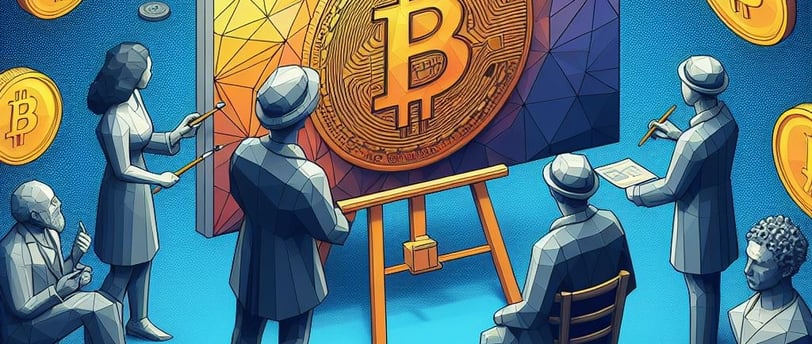How Does Cryptocurrency Influence the Art Market?


The Transformative Impact of Cryptocurrency on the Art Market
The art market has always been a dynamic and ever-evolving industry, constantly adapting to new technologies and trends. In recent years, one such trend has taken the art world by storm - cryptocurrency. This digital currency and the underlying technology of blockchain have revolutionized the way art is bought, sold, and owned. In this deep dive, we will explore the transformative impact of cryptocurrency on the art market and delve into the opportunities it presents for artists and collectors.
Art Sales in the Digital Age
Traditionally, art sales have been conducted through galleries, auction houses, and private dealers. However, the rise of cryptocurrency has opened up new avenues for artists to sell their work directly to collectors, bypassing the traditional intermediaries. With the help of blockchain technology, artists can create digital certificates of authenticity, ensuring the provenance and ownership of their artwork.
Blockchain, a decentralized and transparent ledger, allows for secure and immutable records of transactions. This eliminates the need for intermediaries, such as art dealers or auction houses, to verify the authenticity of the artwork. Collectors can now have a direct line of communication with artists and purchase artwork using cryptocurrencies like Bitcoin or Ethereum.
Ownership Verification and Provenance
One of the biggest challenges in the art market has always been verifying the authenticity and provenance of artworks. With the introduction of blockchain technology, this process has become more efficient and reliable. Each transaction is recorded on the blockchain, creating a permanent and transparent record of ownership.
Artists can now create digital certificates of authenticity, or "smart contracts," that are linked to the artwork and stored on the blockchain. These smart contracts contain information about the artwork, including its provenance, history, and any previous sales. This ensures that the artwork's authenticity can be easily verified by anyone interested in purchasing or owning it.
Furthermore, the decentralized nature of blockchain technology makes it nearly impossible to tamper with or forge records. This provides both artists and collectors with a higher level of trust and security when it comes to the ownership of artwork.
Artist Compensation and Royalties
Another significant impact of cryptocurrency on the art market is the ability to ensure fair compensation for artists. In the traditional art market, artists often struggle to receive their fair share of the profits when their artwork is resold. However, with the introduction of Non-Fungible Tokens (NFTs), artists can now receive royalties every time their artwork is resold.
NFTs are unique digital assets that are stored on the blockchain. They can represent any form of digital content, including artwork. When an artist sells an artwork as an NFT, they can program it to receive a percentage of the sale price every time it is resold in the future. This provides artists with a continuous revenue stream and ensures that they benefit from the increasing value of their artwork.
The Rise of Crypto Art and NFTs
The emergence of crypto art and NFTs has created a whole new market within the art world. Crypto art refers to digital artworks that are created, bought, and sold using cryptocurrencies. These artworks can take various forms, including digital paintings, animations, and even virtual reality experiences.
By tokenizing these digital artworks as NFTs, artists can establish scarcity and ownership in the digital realm. This has opened up new avenues for investment and artistic expression. Collectors can now buy and trade digital artworks as easily as physical artworks, and artists can explore new mediums and formats for their creations.
Furthermore, the decentralized nature of blockchain technology allows for greater accessibility and inclusivity in the art market. Artists from all over the world can showcase their work and reach a global audience without the need for traditional gatekeepers. This has democratized the art market and provided opportunities for emerging artists to gain recognition and success.
Conclusion
The influence of cryptocurrency on the art market is undeniable. It has transformed the way art is bought, sold, and owned, providing artists and collectors with new opportunities and possibilities. With the help of blockchain technology, artists can establish the authenticity and provenance of their artwork, ensuring trust and transparency in the market. NFTs have revolutionized the way artists are compensated, allowing for royalties on resales. The rise of crypto art has created a whole new market within the art world, opening up new avenues for investment and artistic expression. As the art market continues to evolve, cryptocurrency and blockchain technology will undoubtedly play a significant role in shaping its future.
